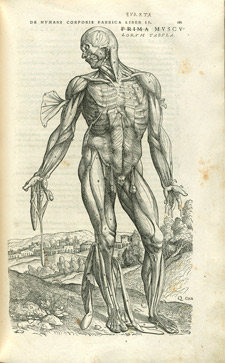 |
Joseph Maclise, Pl.III "Dissection of the
Neck and Thorax, Heart and Blood Vessels"
Surgical Anatomy (1856). |
We would like to draw your attention to an absolutely fabulous resource provided absolutely free by the University of Toronto - perfect for researchers in the medical humanities, or anyone with an admiration for exquisite anatomical art. Please indulge yourself and explore
The Anatomia Collection: 4500 anatomical plates from the Thomas Fisher Rare Book Library, digitised and free to the public. The plates range in date from 1522-1867, and are fully indexed using medical subject headings (MeSH).
If you have
perused our blog thoroughly, you might already have noticed that the gorgeous sketch depicting the face and skull of conjoined twins which we have selected as our header image is a section of a plate from Joseph Maclise's
Surgical Anatomy (1856), all of the plates from which are available through the Anatomia Collection. This particular image was chosen not simply because of what it represented, but because Maclise's style itself, in this plate as throughout his body of work (pun fully intended), seems designed to elicit a highly sensual reaction.
His sketches often depict the hooks, strings, and instruments used to expose successive layers of flesh, vessels, and organs, remnants of the intrusion of medical probing which are typically erased from anatomical sketches. And also unlike many medical sketches, which hide the faces of their subjects, or else strip them of their identity, Maclise's "dissected figures", to quote the collection's description of the text, "seem almost life-like, with real faces, usually of young men with fair hair."
The description goes on to suggest that, "endowed with great dignity, the figures resemble the romantically noble heroic figures in his brother's paintings" (his brother being the artist Daniel Maclise). The assertion that Maclise endows his figures with dignity and romantic nobility is not necessarily untrue, but a scan through his work will reveal bodily contortions that seem more indicative of violent ecstasy, even torture, scattered throughout the romantic heroes. Amongst these evidently "life-like" figures also rises the gaunt, unavoidably lifeless face of one man, who simultaneously evokes images of decay, even of intense starvation.
Maclise's detailing of the feathered hair clinging to skin even as it is pulled apart to reveal each layer beneath, of the instruments that rip and tear as much as they slice, leaving ragged flaps as a grotesque frame, all of this casts a reflection of the dissected corpse on the page (or screen) onto the body of those observing it. As much as some images may evoke dignity and heroics, Maclise's overall style draws attention to a grim sensuality of dissection that is absent from many medical sketch. As he exposes the mystery of muscles and bones and blood vessels, his drawings render the subject/body monstrous; twisted, tortured, ecstatic, open bodies intimately tied to the living observer through an evocation of shared sensuality.















